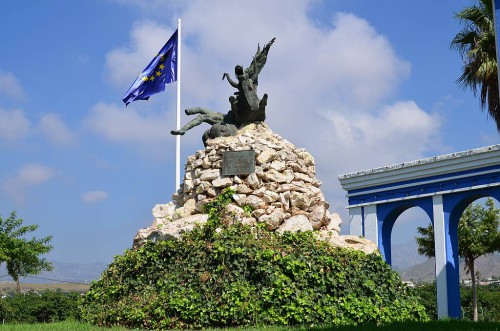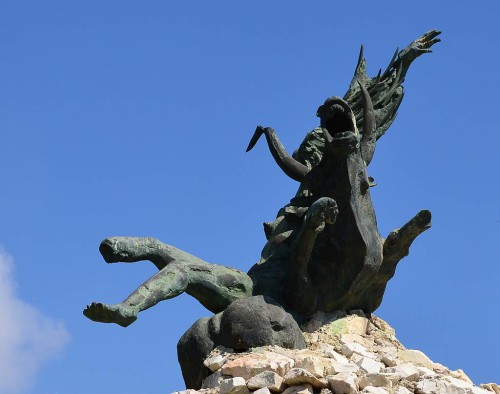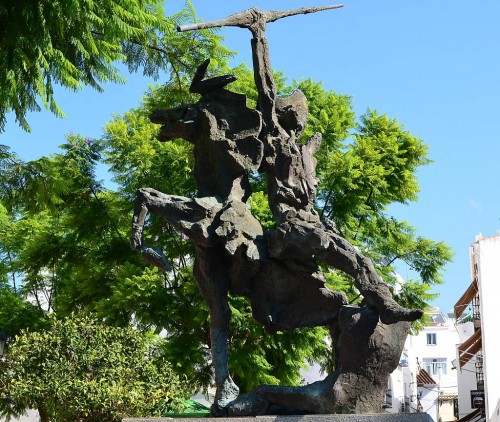Nerja is home to several sculptures by the Córdoban artist Aurelio Teno, the most famous of these being the Rapto de Europa, a monument commemorating the entry of Spain into the European Union in 1986.
This statue stands at the western entrance to Nerja on the old N-340 coastal road.
Aurelio Teno Teno was born on September 7th 1927 in Mina de Soldado, Córdoba. Between 1936 and 1943 he lived in Córdoba, training as an artist in several disciplines. He began as an apprentice with the sculptor Amadeo Ruiz Olmos, then moved to a workshop specialising in silver before studying painting and drawing at the School of Arts and Crafts in Córdoba.
In 1950 he moved to Madrid to work as a goldsmith and thereafter spent ten years in Paris, continuing his studies of the fine arts and during which time he exhibited his paintings in a number of well-known galleries, such as the Palais de Beaux Arts.
Another example of Aurelio Teno’s work can be found in calle Málaga, Nerja. A very Quixotic figure.
The statue contains a plaque explaining the meaning of the piece.
In 1960, Aurelio Teno returned to Madrid, although he set up his studio in Molino del Cubo in Ávila. He began a series of international exhibitions in St Louis, Copenhagen, Paris, New York and Rabat and in 1976 won an international competition to design a sculpture of Don Quixote to be placed in front of the Kennedy Centre in Washington, beating off competition from no lesser figures than Salvador Dali and José de Creeft.
The iglesia El Salvador on the Balcón de Europa in Nerja also contains a statue of Christ by Aurelio Teno, this one fashioned in bronze.
The sculptor finally moved his workshop, with a museum dedicated to his work, to an old monastery in Pedrique in the municipality of Pozoblanco.
Aurelio Teno Teno died in Córdoba on February 1st 2013 at the age of 84 years.





